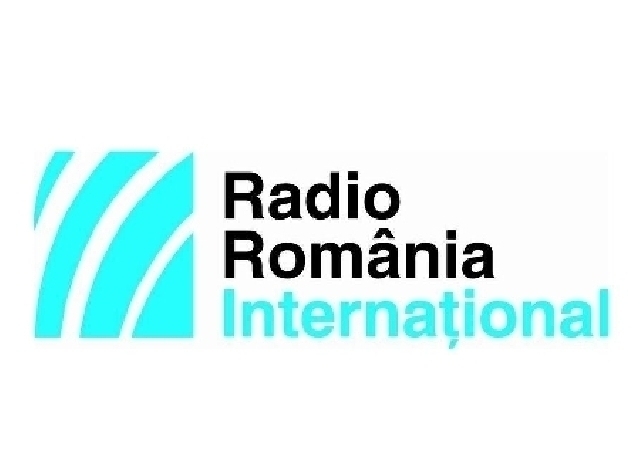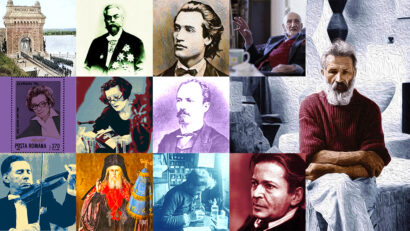Mathematician Petre Sergescu
Petre Sergescu was a mathematician born in 1893 who contributed to the development of sciences in Romania and abroad, after 1918.

Ștefan Baciu, 09.06.2018, 14:07
This year, as Romania celebrates the Centennial of the 1918 Union, we cannot overlook those who created the culture of Greater Romania, through remarkable contributions in their areas of expertise. One of them was Petre Sergescu, a mathematician born in 1893 who contributed to the development of sciences in Romania and abroad, after 1918. Magda Stavinschi, author of a book entitled “Petre Sergescu and Mathematical Thinking,” tells us about Sergescu’s early life:
“He was born in Turnu Severin nearly 125 years ago, and died in Paris in 1954. Petre Sergescu attended Traian National College of Turnu Severin and he took two Baccalaureate exams, one in sciences and one in Latin. Mathematician Gh. Titeica, himself born in Turnu Severin, admired him for his contributions to the ‘Mathematics Journal’, and even rewarded him in 1912. Between 1912 and 1916 Sergescu went to the School of Mathematics, University of Bucharest. At the same time he was also studying philosophy and even attended the Music Conservatory, because he had an outstanding tenor voice and he would entertain his friends performing various opera arias.”
In 1914, Petre Sergescu started to publish articles in various magazines that lobbied for the protection of the Romanian identity. Under the German occupation in part of the Kingdom of Romania between 1916 and 1918, when Petre Sergescu was a math teacher at the Traian high school in Turnu Severin, he was deported for one and a half years to labour camps in Bulgaria, and then to Tismana, because of his patriotic stand. After the war and the Great Union, Sergescu left for Paris to further his education. This was also where he married Polish-born French writer Maria Kasterska. Magda Stavinshi tells us more about his career in the interwar years:
“Sergescu left for France in 1919, and attended the Sciences Department of the Ecole Normale Superieure, obtaining a bachelor’s degree in mathematics. Concurrently, he studied the philosophy of mathematics with Pierre-Leon Boutroux. In November 1923, he got a Ph.D. in mathematics, with a thesis in French presented to a commission made up of great Romanian mathematicians, including Gheorghe Titeica and Traian Lalescu. In 1924 his academic career began. First he taught in Bucharest, at the Polytechnics School, then, for many years, in Cluj. Over the years, he taught algebra, integral equations, number theory, function theory, as well as the history of mathematics. In 1929 he launched a series of mathematics magazines, in French and Romanian, of which 23 volumes were published until 1948. Urged by the historian Nicolae Iorga, he entered politics and in 1932 he was a Deputy representing the County of Salaj. In a pedagogical magazine of that time, he expressed his concerns with the difficult living standards of school teachers and the fact that they were underpaid. He did everything he could to help them. In 1937, Petre Sergescu was elected President of the International Academy of the History of Science, a body that is still very important in the field.”
Petre Sergescu’s international career was also outstanding. He chaired several international math congresses held abroad. In 1939 he also became the president of the Lima National Academy of Sciences based in Peru. In 1933, he published a remarkable paper, “Les sciences mathematiques en France,” which received the Award of the Science Academy, and in 1935 he published “L’evolution des sciences mathematiques and physiques” at the Flammarion publishers in Paris. It was actually in the capital of France that the Romanian mathematician settled after he was dismissed as rector of the Polytechnic University of Bucharest, on grounds that he had declined to sign an oath of allegiance to the newly established People’s Republic of Romania. He lived in exile until 1954, when he died, leaving behind a notable contribution to the world’s scientific development. Magda Stavinschi once again:
“He was the founder and organizer of the International Committee on the History of Sciences. He was even regarded as the one who forged a close relation between the International Academy of the History of Science and UNESCO. He was entrusted with promoting the history of science as a project of paramount importance in the history of human culture. He also had the idea of establishing an International Society of the History of Science. At his suggestion, UNESCO agreed to subsidize a magazine called Archives Internationales d’Histoire des Sciences. Moreover, Petre Sergescu was the permanent secretary of the International Academy of the History of Science.”
After his wife Maria Karsterska died, the Romanian library that the Sergescu family had owned in Paris was donated to the French Institute.






























